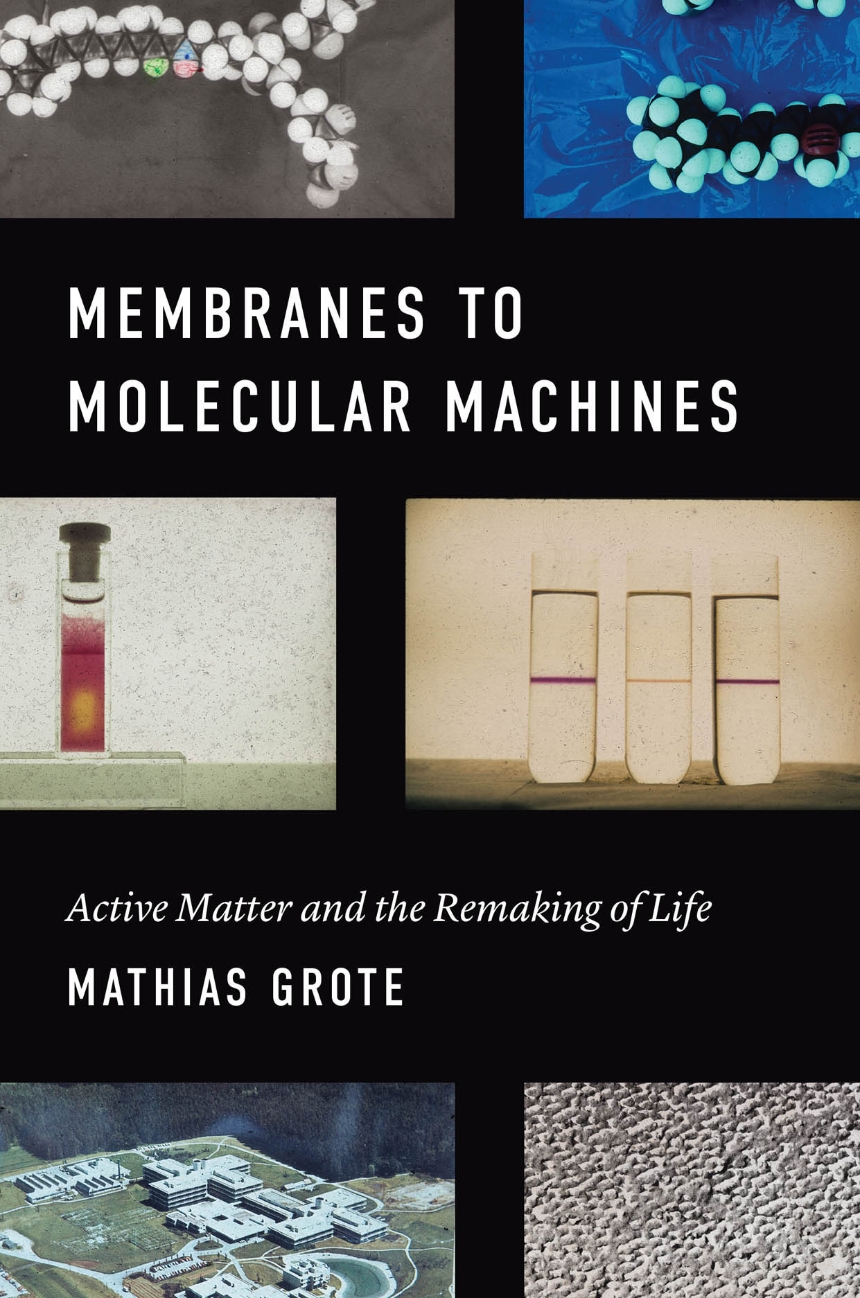Membranes to Molecular Machines
Active Matter and the Remaking of Life
Today's science tells us that our bodies are filled with molecular machinery that orchestrates all sorts of life processes. When we think, microscopic "channels" open and close in our brain cell membranes; when we run, tiny "motors" spin in our muscle cell membranes; and when we see, light operates "molecular switches" in our eyes and nerves. A molecular-mechanical vision of life has become commonplace in both the halls of philosophy and the offices of drug companies, where researchers are developing “proton pump inhibitors” or medicines similar to Prozac.
Membranes to Molecular Machines explores just how late twentieth-century science came to think of our cells and bodies this way. This story is told through the lens of membrane research, an unwritten history at the crossroads of molecular biology, biochemistry, physiology, and the neurosciences, that directly feeds into today's synthetic biology as well as nano- and biotechnology. Mathias Grote shows how these sciences not only have made us think differently about life, they have, by reworking what membranes and proteins represent in laboratories, allowed us to manipulate life as "active matter" in new ways. Covering the science of biological membranes in the United States and Europe from the mid-1960s to the 1990s, this book connects that history to contemporary work with optogenetics, a method for stimulating individual neurons using light, and will enlighten and provoke anyone interested in the intersection of chemical research and the life sciences—from practitioner to historian to philosopher.
The research described in the book and its central actor, Dieter Oesterhelt, were honored with the 2021 Albert Lasker Basic Medical Research Award for his contribution to the development of optogenetics.
Membranes to Molecular Machines explores just how late twentieth-century science came to think of our cells and bodies this way. This story is told through the lens of membrane research, an unwritten history at the crossroads of molecular biology, biochemistry, physiology, and the neurosciences, that directly feeds into today's synthetic biology as well as nano- and biotechnology. Mathias Grote shows how these sciences not only have made us think differently about life, they have, by reworking what membranes and proteins represent in laboratories, allowed us to manipulate life as "active matter" in new ways. Covering the science of biological membranes in the United States and Europe from the mid-1960s to the 1990s, this book connects that history to contemporary work with optogenetics, a method for stimulating individual neurons using light, and will enlighten and provoke anyone interested in the intersection of chemical research and the life sciences—from practitioner to historian to philosopher.
The research described in the book and its central actor, Dieter Oesterhelt, were honored with the 2021 Albert Lasker Basic Medical Research Award for his contribution to the development of optogenetics.
296 pages | 4 color plates, 23 halftones | 6 x 9 | © 2019
Biological Sciences: Biochemistry
Physical Sciences: History and Philosophy of Physical Sciences
Reviews
Table of Contents
Preface
Introduction: The Molecular Mechanical Vision of Life
Descartes among the X-ray machines? Mechanisms, molecular machines, and the epistemology of science
Life and matter—another history of the molecular life sciences after 1970
Constitutive and exemplary: Bacteriorhodopsin, membranes, and the rise of molecular machinery
A note on people and places, times and sources
Outline of the book
Life and matter—another history of the molecular life sciences after 1970
Constitutive and exemplary: Bacteriorhodopsin, membranes, and the rise of molecular machinery
A note on people and places, times and sources
Outline of the book
Part One: Taking Membranes Apart, Isolating a Molecular Pump
1. What Membranes Can Tell a Historian and Philosopher of the Life Sciences
2. Active Matter
Part Two: Remaking Membranes and Molecular Machines
3. Synthesizing Cells and Molecules—Mechanisms as “Plug-and-Play”
4. Biochip Fever: Life and Technology in the 1980s
Conclusion
Matter, activity, and mechanisms at the interstice of the chemical and the life sciences
Molecular machinery in past, present, and beyond
The bigger picture—membranes and molecular machines in the history of the life and the chemical sciences
Beyond life? Places and scientists after molecular biology
List of Abbreviations
Glossary
Notes
Sources
References
Index
Molecular machinery in past, present, and beyond
The bigger picture—membranes and molecular machines in the history of the life and the chemical sciences
Beyond life? Places and scientists after molecular biology
List of Abbreviations
Glossary
Notes
Sources
References
Index
